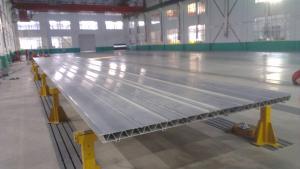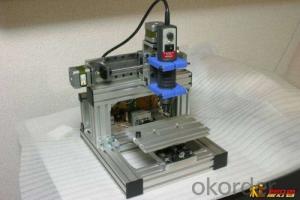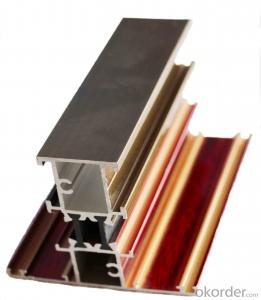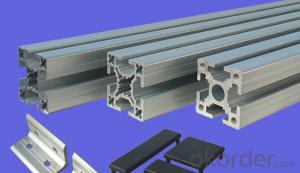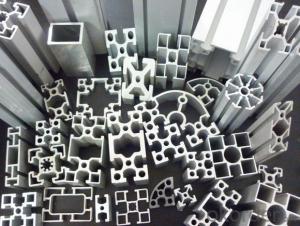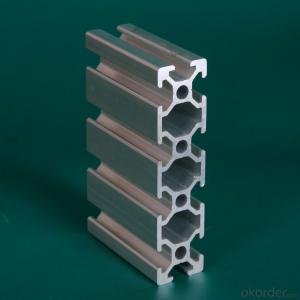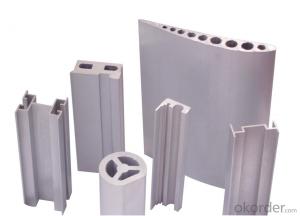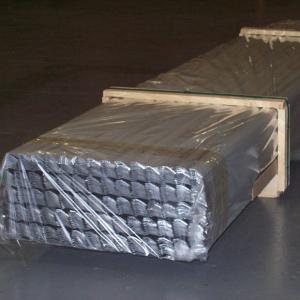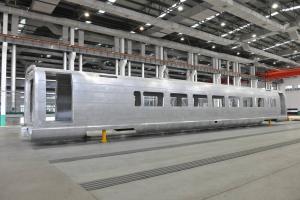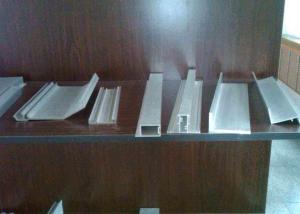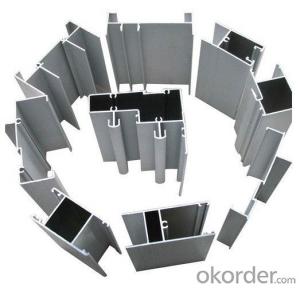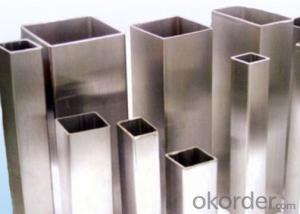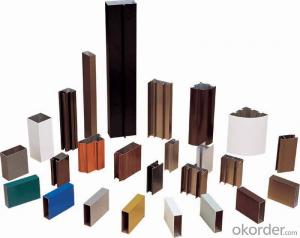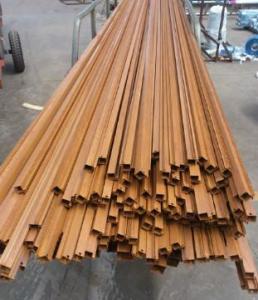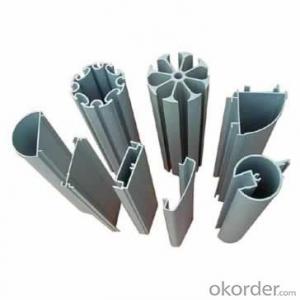Aluminum Profiles Extrusion for Ship Deck
- Loading Port:
- China Main Port
- Payment Terms:
- TT OR LC
- Min Order Qty:
- -
- Supply Capability:
- -
OKorder Service Pledge
OKorder Financial Service
You Might Also Like
Aluminium profile for ship deck
1. Surface: Mill surface treatment
2. Alloy:5083 alloy temper.
3. Size:various dimensions to meet customer’s requirement
4. Advantage:
This ship desk is made with 5083 aluminum profile which has ultra high strength and security, anti-Rust and anti-corrosion. The main advantage with such alloy is as following:
Recycling: this aluminum alloy is easy to be recycled.
Durability and long service life: this aluminum material can be used for 30 years.
Impact resistance: impact resistance of aluminium alloy is higher than steel material.
Quick repairability,: Aluminium can be quickly repaired after colliding
Light weight so to improve ship speed.
Personalization: we can make customized boats according to the customer's requirements and designs.
5. Package:
Standard packaging: 10 pcs of profiles wrapped tightly in one bundle with at least 3 layers of heat-shrinkage at two ends and middles of the bundle, card strips will be used to separate different layers.
6. Life time: Last for 50 years
7. Standard: EN755-9 standard
- Q: This question asks about the various types of aluminum profiles that are utilized in the construction of insulation systems.
- <p>Aluminum profiles used for building insulation come in various types, each serving specific functions. These include: 1. Insulation profiles, which provide a thermal barrier; 2. Structural profiles, used for structural support; 3. Cover profiles, which protect the insulation material; 4. Joint profiles, used for sealing joints; 5. Corner profiles, for reinforcing corners; 6. Edge profiles, for finishing edges; and 7. Special profiles, designed for specific applications. Each type is engineered to enhance thermal efficiency and structural integrity in building insulation systems.</p>
- Q: Are aluminum profiles suitable for lighting fixtures?
- Lighting fixtures can greatly benefit from the use of aluminum profiles. Aluminum, being a lightweight and versatile material, offers numerous advantages for lighting applications. To begin with, aluminum profiles possess excellent thermal conductivity. This means they effectively dissipate the heat generated by the lighting fixtures. Maintaining a cooler operating temperature is crucial as excessive heat can shorten the lifespan and impact the performance of the lighting components. By utilizing aluminum profiles, the longevity and efficiency of the lighting fixtures are enhanced. Moreover, aluminum profiles are resistant to corrosion, making them suitable for both indoor and outdoor lighting fixtures. This corrosion resistance ensures that the fixtures can endure harsh environmental conditions, such as high humidity or moisture exposure, without deteriorating or losing functionality. Additionally, aluminum profiles are easily customizable and can be tailored to meet various lighting requirements. They can be extruded into different shapes and sizes, allowing for flexibility in the design of lighting fixtures. This versatility empowers manufacturers to create sleek and modern lighting solutions that seamlessly integrate into different architectural designs and spaces. Furthermore, aluminum profiles offer aesthetic appeal as they can be powder-coated or anodized in a wide array of colors. This provides a plethora of options to match different interior or exterior design themes. Lastly, aluminum is a sustainable material that can be fully recycled. By choosing aluminum profiles for lighting fixtures, one contributes to reducing environmental impact and supports the principles of sustainability. To summarize, aluminum profiles are highly suitable for lighting fixtures due to their thermal conductivity, corrosion resistance, versatility, aesthetic appeal, and sustainability. This is why they are extensively used in the lighting industry.
- Q: What are the applications of aluminum profiles?
- Aluminum profiles have a wide range of applications in various industries due to their unique characteristics and properties. Some of the main applications of aluminum profiles include: 1. Construction: Aluminum profiles are extensively used in the construction industry for windows, doors, curtain walls, and structural components. They provide excellent strength, durability, and resistance to corrosion, making them ideal for building purposes. 2. Automotive: Aluminum profiles are used in the automotive industry for manufacturing lightweight and fuel-efficient vehicles. They are utilized in the production of car frames, engine mounts, heat exchangers, and other structural components. 3. Aerospace: Aluminum profiles find significant applications in the aerospace industry due to their high strength-to-weight ratio. They are used in the construction of aircraft frames, wings, fuselage, and other critical components. 4. Electrical and Electronics: Aluminum profiles are widely used in electrical and electronics applications. They are utilized in the manufacturing of heat sinks, LED lighting fixtures, electrical enclosures, and electronic device housings due to their excellent thermal conductivity and electrical insulation properties. 5. Furniture: Aluminum profiles are increasingly being used in the furniture industry for manufacturing lightweight and stylish furniture pieces. They are utilized in the production of chairs, tables, cabinets, and shelving systems, providing a modern and aesthetic appeal. 6. Industrial Machinery: Aluminum profiles are extensively used in the manufacturing of industrial machinery and equipment. They are utilized in the construction of conveyor systems, assembly line structures, machine frames, and guarding systems due to their lightweight, durability, and ease of fabrication. 7. Marine: Aluminum profiles are commonly used in the marine industry due to their corrosion resistance and lightweight properties. They are utilized in the construction of boat frames, masts, hulls, and other marine structures. 8. Renewable Energy: Aluminum profiles find applications in renewable energy systems such as solar panels and wind turbines. They are used in the manufacturing of solar panel frames, wind turbine supports, and mounting structures due to their lightweight and corrosion resistance. Overall, aluminum profiles offer a versatile and cost-effective solution for various industries, catering to their specific requirements for strength, durability, lightweight, and corrosion resistance.
- Q: Are aluminum profiles suitable for historical or heritage restoration projects?
- Yes, aluminum profiles can be suitable for historical or heritage restoration projects. Aluminum is a versatile material that can be customized to match the original design and aesthetic of historical buildings. It is durable, lightweight, and resistant to corrosion, making it a practical choice for long-term preservation. Additionally, aluminum profiles offer flexibility in design and can be easily fabricated to replicate intricate details found in heritage structures.
- Q: How do aluminum profiles perform in wind-resistant structures?
- The performance of aluminum profiles in wind-resistant structures is widely recognized. They possess inherent strength and durability, enabling them to endure high wind pressures while maintaining their structural integrity. The lightweight characteristic of aluminum makes it an ideal material for wind-resistant structures as it reduces the overall building load without compromising strength. Aluminum profiles exhibit high tensile strength and resistance to corrosion, making them suitable for harsh weather conditions, including strong winds. They also possess a high stiffness-to-weight ratio, which effectively distributes wind load and minimizes deflection. This characteristic is crucial in wind-resistant structures as it prevents excessive movement and ensures the safety of the building and its occupants. Moreover, aluminum profiles offer easy fabrication and customization, allowing for the creation of intricate and innovative designs. This design flexibility empowers architects and engineers to optimize the structure's aerodynamics, further enhancing its resistance to wind forces. Additionally, aluminum profiles can be combined with other materials, such as glass or composite panels, to establish a more robust and efficient wind-resistant system. In conclusion, aluminum profiles are incredibly reliable and efficient for wind-resistant structures. Their strength, lightweight nature, corrosion resistance, and design flexibility make them an exceptional choice for constructing buildings that can endure strong winds and guarantee the safety and durability of the structure.
- Q: Are aluminum profiles suitable for furniture applications?
- Yes, aluminum profiles are suitable for furniture applications. Aluminum is a lightweight and durable material that can be easily shaped and manipulated to create various furniture designs. It provides stability and strength to furniture pieces while also offering a sleek and modern aesthetic. Additionally, aluminum is resistant to rust and corrosion, making it suitable for both indoor and outdoor furniture applications.
- Q: What are the specific needs or standards for utilizing aluminum profiles in cold weather conditions?
- <p>In cold climates, aluminum profiles must meet certain requirements to ensure durability and functionality. These include resistance to extreme temperatures, which may affect the material's strength and flexibility. Profiles should be made from high-quality aluminum alloys designed for low-temperature performance. Additionally, proper thermal breaks may be necessary to prevent heat loss through the profile. Corrosion resistance is also crucial, as cold environments can accelerate the process. Lastly, it's essential to consider the expansion and contraction of aluminum in cold temperatures, ensuring the design accommodates these changes to prevent warping or cracking.</p>
- Q: Are aluminum profiles easy to install?
- Aluminum profiles, in general, have a reputation for being easy to install. Their lightweight nature and manipulability contribute to a simpler installation process when compared to alternative materials. Moreover, aluminum profiles frequently come equipped with pre-drilled holes or slots, which aid in installation and guarantee precise alignment. Additionally, the modular design of aluminum profiles permits effortless assembly and disassembly without any requirement for specialized tools or expertise. All in all, the user-friendly characteristics of aluminum profiles make them a favored option for a wide range of applications, including construction, manufacturing, and DIY projects.
- Q: What specific considerations should be taken into account when using aluminum profiles in extreme temperatures, be it cold or hot?
- <p>Aluminum profiles are generally durable and can withstand a wide range of temperatures. However, in extremely cold climates, thermal contraction can occur, potentially leading to gaps or cracks. It's important to allow for expansion and contraction in the design. In hot climates, while aluminum doesn't lose strength, it can expand and warp if not properly supported. Additionally, it can become hot to the touch, which may require protective measures to prevent burns. Always ensure that aluminum profiles are of high quality and are designed for the specific climate conditions they will be exposed to.</p>
- Q: How to use aluminum profile on the side of roller conveyor?
- Aluminum profile inside 1 cm thick lining board, our unit of assembly line is like that
Send your message to us
Aluminum Profiles Extrusion for Ship Deck
- Loading Port:
- China Main Port
- Payment Terms:
- TT OR LC
- Min Order Qty:
- -
- Supply Capability:
- -
OKorder Service Pledge
OKorder Financial Service
Similar products
Hot products
Hot Searches
Related keywords
